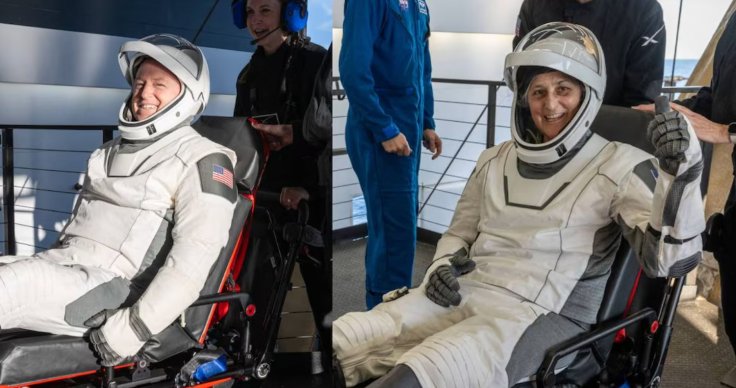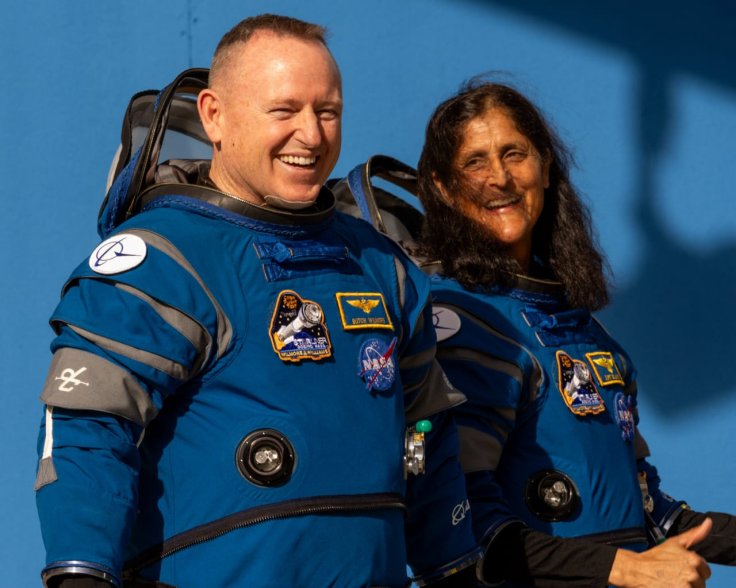The astronauts who endured nine exhausting months on the International Space Station are expected to receive a tiny payout for the inconvenience of their eight-day mission, which turned into a nine-month ordeal in space.
Sunita Williams and Butch Wilmore splashed down off the coast of Florida on Tuesday aboard a SpaceX Crew Dragon capsule, alongside NASA's Crew-9 members, Nick Hague and Aleksandr Gorbunov. Williams and Wilmore got stranded in orbit last year when their spacecraft was deemed unsafe for the journey home due to propulsion system failures. They were reassigned to the Crew-9 mission, which arrived at the ISS in September with a smaller crew of two to accommodate them.
Shocking Compensation Package

NASA is now expected to provide compensation to its astronauts for their prolonged stay in space, though the exact amount remains unclear. Former NASA astronaut Cady Coleman told the Washingtonian that astronauts receive only their base salary, without overtime, and are given a small stipend for "incidentals"—a minimal amount they are legally entitled to.
"For me, it was around $4 a day," she explained. During her 159-day mission from 2010 to 2011, Coleman earned around $636 in incidental pay.

Based on those figures, Williams and Wilmore—who have annual salaries ranging from $125,133 to $162,672—might receive just over $1,000 in additional pay for their extended time in orbit.
With an annual salary ranging from $125,133 to $162,672, the astronauts could have earned between $93,850 and $122,004 in basic pay for their nine-month stay in space.
Including the incidental allowance, their total earnings may range from $94,998 to $123,152. "They get their regular salary, no overtime, and NASA takes care of transportation, lodging, and food," the Washingtonian reports.

However, it is unclear whether the $4 daily incidental pay has been adjusted for inflation.
In comparison, Neil Armstrong earned a salary of $27,401 as the highest-paid astronaut on the Apollo 11 mission in 1969, as reported by the Boston Herald. Last year, GS-15 pay scales ranged from $123,041 to $159,950 at the higher end.
Back on Earth but Not Home Yet
Williams and Wilmore splashed down off the Florida coast at 5:57 p.m. ET (2157 GMT) yesterday. Despite the physical toll of prolonged space travel—including muscle and bone loss, vision problems, and balance difficulties—experts say their extended stay remains within manageable health risks.

Steve Stich, manager of NASA's Commercial Crew Program, reassured the public at a press conference, saying, "The crew's doing great."
As per standard procedure for astronauts returning from space, Williams and Wilmore were placed on stretchers due to the effects of microgravity on their bodies.
After initial health evaluations, they will be flown to NASA's Johnson Space Center in Houston for further routine medical assessments. The unexpected extension of their mission, particularly the initial period without adequate supplies, has drawn public sympathy.
"If you found out you went to work today and were going to be stuck in your office for the next nine months, you might have a panic attack," Joseph Keebler, a psychologist at Embry-Riddle Aeronautical University, told AFP.
"These individuals have shown unbelievable resilience."
Wilmore and Williams' 286-day mission lasted longer than the usual six-month ISS rotation but stands as the sixth-longest U.S. spaceflight.
The record for the longest single-mission stay by an American is held by Frank Rubio, who spent 371 days in orbit, while Russian cosmonaut Valeri Polyakov holds the world record with 437 days in space.









